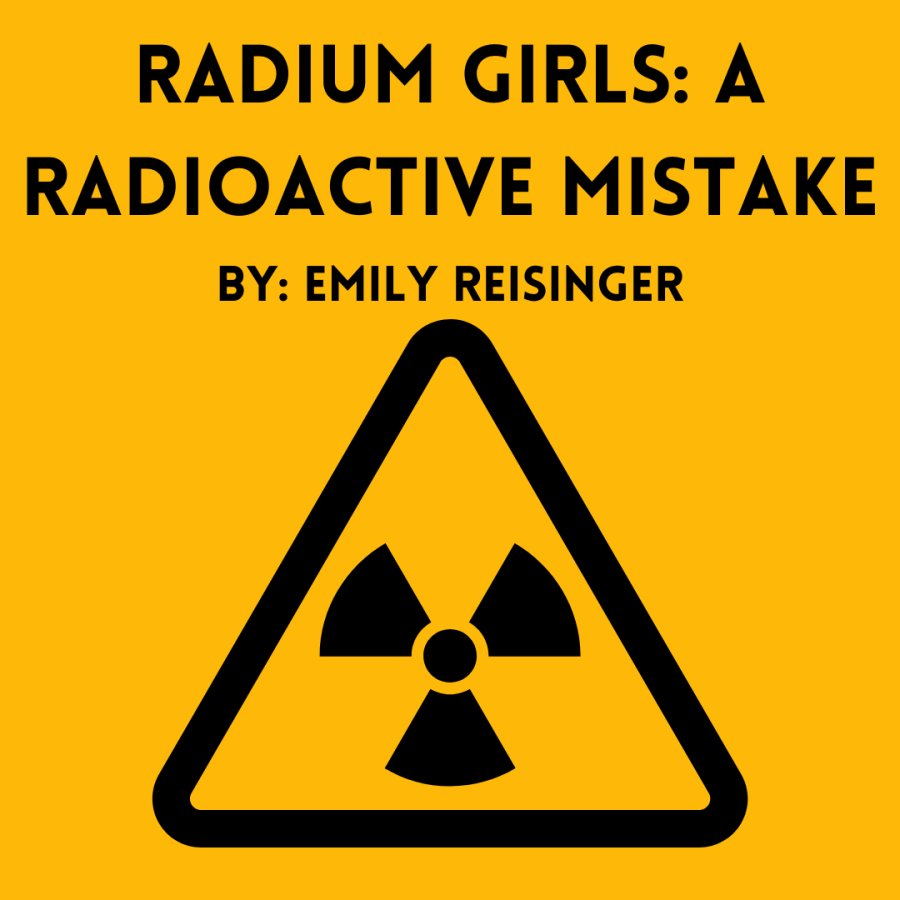Radium Girls: A Radioactive Mistake
October 24, 2022
In the 1920s, it is known that safety regulations and testing was not up to today’s standards in the workplace. A prime example of this is the tragic story of the Radium girls. Many still know of the girls due to modern media. With their story being told in many ways such as the popular movie, Radium Girls and various books such as one of the most popular, The Radium Girls: The Dark Story of America’s Shining Women. As well as many other articles, such as this one.
The story starts with female factory workers whose job consisted of painting watch dials. This itself is harmless, but the issue stems from the fact the paint was laced with a deadly level of radium, a radioactive material. The factory used radium because it made the watches glow in the dark, and at the time they were not fully aware that it was hazardous. These girls did not only deal with radium on a daily basis, but they would also lick their paint brushes to give them a finer tip. So, these girls are ingesting radium on a daily basis for months to years at a time.
Not only this, but the factory workers, all mostly female who ranged from an average of 15 to 19 years old, would paint their faces and coat their clothing before they would go out, because at that time it would help them stand out in clubs after work. Especially since the clock dial painters were a well respected job for female factory workers. Some girls even go to the extent of painting their teeth! During all of this, the girls were told that radium was safe, even as they started to fall ill.

Soon after, the girls started to experience the effects of radium poisoning. Radium can affect a person’s blood, teeth, eyes, bones and more. It can even cause various forms of cancers and lead to an early death. In these cases their remains actually glowed, and they remained radioactive and had to be buried in coffins laced with lead. In photos of the radium girls you can see the effects of the radium causing facial deformities on these girls, the photos of these injuries can be very graphic that would make many people queasy. Many of the girls started to experience some early signs, but brushed it off.
Eventually, the girls brought it up with the company, but the company declined any accusation that radiation was harmful. The company even funded multiple studies, each with opposing results, and only used the one who showed the girls did not die from radium exposure as evidence. They blamed the girl’s illnesses on syphilis. One pathologist named Harrison Stanford Martland discovered that the radium laced paints were radioactive. After working with forensics and pathology, he determined that that radioactive material is what killed the factory workers. Soon, this information became public knowledge.
When the radium girls went to court, the issue arose that many of these girls were dying as the case proceeded. Raymond Berry, accepted the case, and it had an insane amount of media coverage. Although the 5 girls did end up winning the trial, with each of them receiving 10,000 dollars and then 600 dollars till their death, the judge was biased and many believe they should have received more compensation.

The judge actually held stock in the U.S. radium, and it is highly believed that he was not as harsh on the radium company. The media played an impactful role in this trial, helped raise awareness for the victims, and helped other radium girls in other areas realize what was happening to them and their colleagues. With the public being behind the girls and the sales dropping in the radium industry. The public felt sympathy and anger for these girls and wanted justice for the victims.
These events would forever change safety and conditions in the workplace. After the events unfolded, these girls’ stories were a key player in helping create new occupational disease labor laws. This is due to them being the first to receive compensation for injuries due to radioactive exposure in the workplace. This, along with other incidents such as Triangle Shirtwaist Factory fire, children occupational deaths, and more has all helped shape our modern day workforce.





